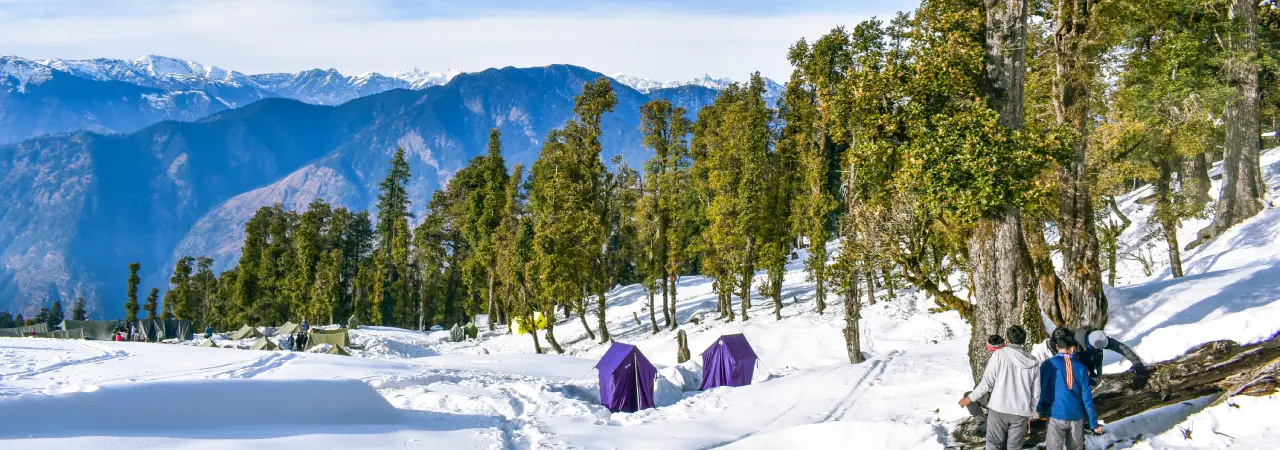
Kedarkantha (in no way related to Kedarnath Sanctuary) is a mountain pinnacle of the Himalayas situated at Govind Pashu Vihar Public Park in Sankri town of Uttarkashi locale. The rise of the pinnacle is around 3,800 m. (12,500 ft.) and is notable among the travellers as the Best Winter Trip in India.
The Kedarkantha gets weighty snowfall throughout the colder time of year season and is simple to direct trouble journey which makes it well known among the two fledglings and middle-level trek.
Assuming that you start from Dehradun, the Kedarkantha journey requires around 6-7 days to arrive at the highest point and back to Dehradun. From Sankri to Sankri it requires around 4 days. December to April is the best opportunity to leave on this lovely excursion as it will permit you to encounter the amazing excellence of the strong Himalayas totally covered with white snow.
Juda Ka Talab, a lake situated at a rise of 2,700 m above ocean level is the principal stop and a significant fascination of the trip. It is accepted that the lake was framed when a drop of water tumbled from Ruler Shiva's hair while he curved his locks and that is the way it got its name. The lake remains totally frozen during the winter as the temperature decreases beneath freezing.
During the excursion, you will end up encompassed by the transcending Himalayas and woods of Deodar and Oak trees. In the event that you respect a stroll in nature, the Kedarkantha Trek is an ideal chance for you to unwind and loosen up in the lap of Mother Earth.
The journey starts with a 210 Km ride from Dehradun to Sankri (a little town situated in the Uttarkashi region of Uttarakhand, India). Sankri is situated at a height of around 2,000 m above ocean level. The drive will take you through the thick timberlands of Deodar and Oak trees which stay covered with snow throughout the colder time of year season.


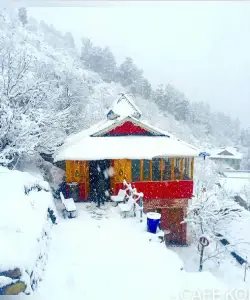
The principal objective for the travelers when they leave from Sankri for its pinnacle is the renowned Juda Ka Talab. The lake is situated in a clearing encompassed by woods which makes it an ideal setting up camp spot for the travelers on this course. It is a 4 Km journey from Sankri to Juda ka Talab which stays frozen throughout the colder time of year season.


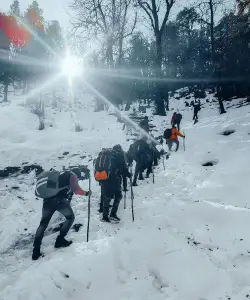
Another 4 Km away from the Juda Ka Talab is the Kedarkantha Headquarters and it takes around 2 - 3 hours to arrive there. The trip course will take you across a thick woodland of pine and oak trees and steep edges.


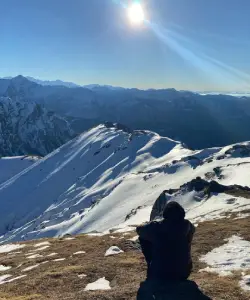
This is a piece testing part of the path, the 6 Km long path will take around 5 - 6 hours to scale. It means a lot to begin promptly in the first part of the day to partake in the mysterious dawn from the Kedarkantha top. From the Kedarkantha Pinnacle, you will get a total 360-degree perspective on the encompassing pinnacles which incorporate Swargarohini, Bandarpoonch, Kala Bother and others. In the wake of investing some energy at the pinnacle, the adventurers head back to the headquarters for a short-term visit.
Remembering your means back on a similar course, crossing the pine woods, today you will go to Sankri. The diving trail makes it more straightforward and faster to stroll back when contrasted with ascending. The short-term visit will be at Sankri.


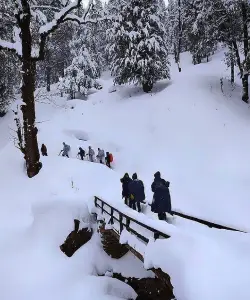
On the last day of the Kedarkantha Trek, you will be driving back to Dehradun from Sankri through similar delightful woods. 210 Km drive requires around 7 hours and you will arrive at Dehradun before supper so make sta/travel game plans in like manner.
Although the Kedarkantha trek is one of the few Himalayan treks that remains accessible to the trekkers throughout the year, winter is considered to be the best time to visit this trek. It is not advised to visit this trek during the months of July & August due to the heavy monsoon rainfall in the state of Uttarakhand.
Every season offers a different adventure because the terrain changes drastically with seasons. This can make the trek easier or more difficult in a particular season.
Winters
The best time to visit Kedarkantha trek is during the winter season. The snowfall starts from mid November upto February. The winters in Kedarkantha are characterised by snowfall, cold days & even colder nights.
The temperature during the daytime varies from 8 - 10 degrees celsius and expect nights to drop below sub zero. Sometimes, during the peak winter seasons, the temperatures can hit a maximum low of -7 degrees celsius.
This should not pose a problem to you if you have the right gear and proper layering of clothes. This will enable you to enjoy the cold weather of Kedarkantha without any problems. Heavy snow can sometimes block the trek route so if you are planning to visit during the peak winter season, it might take more time to complete the trek.
Summers
The summer trek at Kedarkantha is characterised by warm, bright & sunny sunny days with temperature ranging from 16 - 23 degrees celsius which drops to about 5 - 7 degrees during the night. This is a good time to visit this for those who don’t like trekking in cold temperatures.
Monsoons
It is generally not advised to visit this trek during the monsoon season. The heavy rainfall makes the trail difficult to walk on and lightning poses another danger. If you really want to trek somewhere during the monsoons, there are a lot of other great treks that bloom during the rainy season.
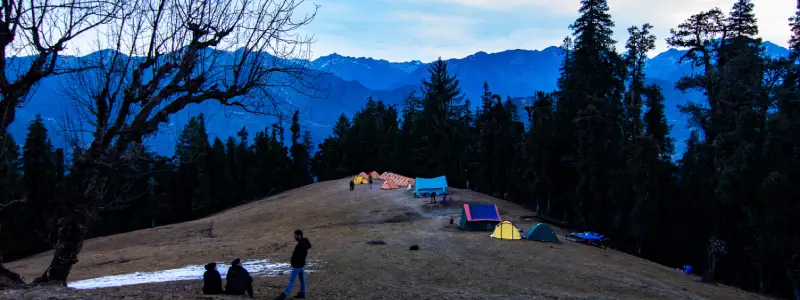
This is an easy to moderate difficulty trek. The ascent is gradual but a bit steep as we reach closer to the peak. You will have to walk a maximum of 4 -5 Km per day to reach the maximum altitude of 12,500 ft. which makes it a perfect summit trek for beginners. Multiple entry as well as exit points makes the trek even more safe in case one of the routes has to shut down for some reason which is extremely rare.
In case there is heavy snowfall, it becomes a bit difficult to walk on the trail pushing the trek to moderate difficulty level requiring good trekking equipment like gators, walking stick and microspikes which makes it easier to walk on the snow ridden trail.
The Kedarkantha is a very safe trek with multiple exit points, moderate altitude at the peak, well marked trails & good camping spots. It gets a bit difficult near the summit but does not require any technical climbing skills or gear. The gradual ascent towards the peak reduces the chances of AMS (Altitude Mountain Sickness) as you get plenty of time to acclimatize to the weather.
This is a brief list of things that you should carry on the trek to make the experience more memorable and much more comfortable -
If you are travelling with a trekking company, some of these things might be included in your package. Make sure to ask them what all equipment and extras they will provide you during the trek.
Mori
Government Hospital, Mori
Mori-Sankari Rd, Mautar, Uttarakhand 249128
Distance from Sankri - 21.4 Km
Time to Reach - Approximately 1 Hour
Barkot
Government Hospital Barkot
R644+VRG, Barkot, Uttarakhand 249141
Distance from Sankri - 82.3 Km
Time to Reach - Approximately 3 Hours
Swami Vivekanand Dharmarth Chikitsalay
R643+QXM, Barkot, Uttarakhand 249141
Distance from Sankri - 82 Km
Time to Reach - Approximately 3 Hours
Network & Connectivity
There is only limited connectivity available during the Kedarkantha Trek. Only some spots get good network connectivity. The best networks for this trek are BSNL & Jio.
ATMs
The last ATM before Sankri is an SBI ATM located in Mori but it remains void of cash a lot of times, in such situations you can swipe your card at and get cash from the authorized SBI Cash Withdrawal Center located Nearby.
However, it is recommended that you withdraw your cash at Dehradun, Mussoorie or Purola to avoid any last minute hassle.
Is Kedarkantha Trek Easy?
Kedarkantha trek is considered to be an easy to moderate difficulty trek and is highly recommended for beginners who want to experience a summit climb.The trail is easy but gets a bit difficult as you reach closer to the peak but it does not require any technical gear or climbing skills.
How much does Kedarkantha Trek Cost?
Different trekking companies provide different packages according to the facilities & pickup location they offer for this trek. Generally, it ranges from Rs 6,000 to Rs 10,000 for Sankri to Sankri for 4 Nights. If you want the pickup and drop locations to be Dehradun, then an additional charge of Rs 1,500 - Rs 2,000 will be levied. If you decide to reach Sankri on your own by bus, then you would be able to save some amount on your travelling.
Which is the best time for Kedarkantha Trek?
Although the Kedarkantha Trek remains open for most part of the year, the winter season from October to February is the best time to visit this trek. If you want to experience snow then you can choose to go there from November end to mid March.
How long is the Kedarkantha Trek?
The trek takes 6 to 4 days to complete depending upon your starting point. It will take 4 days from Sankri to Sankri and 2 additional days for travelling if you are going from Dehradun to Dehradun. The trekking distance from Kedarkantha base camp to Peak is about 24 Km.
Can Kedarkantha Trek be done in one day?
Yes, it is absolutely possible to do Kedarkantha trek in one day but only if you are a seasoned trekker. It is difficult to do it in a single day during winters when this area receives heavy snowfall which makes it difficult to walk on the trail. But it is very much possible to do it in a single day during summers.